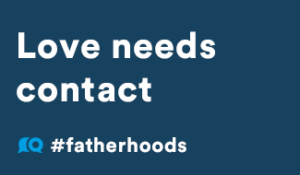Parents can, understandably, feel worried when a judge decides to order a section 7 report. This is, however, simply a way for a judge to obtain assistance from an expert in the field of child welfare when deciding an issue regarding the child’s upbringing. The legal jargon around section 7 reports is unhelpful and there is a need in law generally for greater use of plain English, especially as so many parents now represent themselves in court. This article goes back to basics. It explains what a section 7 report is, why it might be ordered, what parents need to do, how to challenge an unhelpful report, and the impact of the report on the final decision by a judge.
What is a section 7 report?
When legal professionals talk about a “section 7 report”, this is a reference to section 7 of the Children Act 1989. Essentially, this section of the Act allows judges to seek help from a relevant professional when they are required to determine a dispute about the upbringing of a child. That relevant professional is usually a court-appointed social worker of CAFCASS (the Children and Family Court Advisory and Support Service). CAFCASS officers are expert in matters of child welfare. They are used to dealing with children and assessing their wishes and feelings, and in practice often act as the voice of the child, so they are well placed to help the court determine what order would be in a child’s best interests.
Forget the legal terminology – think of the report as an opportunity for an independent professional to take an objective look at the dispute and assist in helping find a resolution, with your child’s best interests at the heart of the discussion.
Section 7 is worth a read but, for ease, the key part is as follows (paraphrased): “A court considering any question with respect to a child under this Act may […] ask a local authority to report to the court on such matters relating to the welfare of that child as are required to be dealt with in the report.”
In plain English, the reference to “such matters relating to the welfare of [that] child” means that the court can ask the CAFCASS officer to include consideration in the report of any matters that the court believes are relevant to the question of welfare (sometimes the judge wants to know the CAFCASS officer’s view on specific points), and it also allows the officer freedom to include whatever information he or she believes is relevant. The officer will be guided by the same factors that the court is guided by. These are contained in section 1(3) of the Children Act 1989 and, together, are referred to as the “welfare checklist”. They are as follows:
- The ascertainable wishes and feelings of the child concerned (considered in the light of his age and understanding);
- His physical, emotional and educational needs;
- The likely effect on him of any change in his circumstances;
- His age, sex, background and any characteristics of his which the court considers relevant;
- Any harm which he has suffered or is at risk of suffering;
- How capable each of his parents, and any other person in relation to whom the court considers the question to be relevant, is of meeting his needs; and
- The range of powers available to the court under this Act in the proceedings in question.
Each CAFCASS officer should think about these factors when making an assessment. The format of section 7 reports will differ from social worker to social worker, but they should all contain the following:
A summary of the key issues at dispute;
- Key facts (background information, ages of children, each parent’s side of the story as communicated to the CAFCASS officer etc.);
- The CAFCASS officer’s response to certain questions that the court requires answering (e.g. is there evidence of parental alienation); and
- A recommendation as to the order that a judge should make when determining the dispute.
The CAFCASS officer may also address the Child Impact Assessment Framework. This consists of guidance for social workers as to how children experience parental separation, how this is understood and how it can be acted upon by officers. It includes advice on situations where there is domestic violence, parental alienation/resistance by the child, harmful conflict, or other forms of harmful parenting. If there are concerns about parental alienation or related issues then the officer may address the “four A’s” i.e. whether there is appropriate justified rejection, alignment/affinity, attachment, or alienation.
When are section 7 reports required?
Section 7 reports can be ordered in any type of Children Act application where the judge feels a need for expert assistance. This is usually in cases where applications for the following orders are made: child arrangements orders (who the child lives with or spends time with), prohibited steps orders (to stop a parent from taking a certain step e.g. changing a child’s school), specific issue orders (to require a parent to do something e.g. allow a child to undergo medical treatment or attend a certain school), or permission to remove from the jurisdiction (to take a child to live outside of England and Wales). The judge has freedom to ask CAFCASS for support, and CAFCASS must comply with the request (see section 7(5)). Usually, the request for a report is made at the First Hearing Dispute Resolution Appointment (FHDRA) so that by the Dispute Resolution Appointment (DRA) (the second hearing, at which the parties try to negotiate a settlement), the parties can consider what the expert has to say, or alternatively before the final hearing (when a binding decision is made).
Much has changed in the last decade or so. Previously, section 7 reports were quite commonplace and would be ordered in many cases. However, CAFCASS is under great strain with the weight of its caseload and limits on public funding mean that there are sometimes too few officers to prepare too many reports. Judges also can rely on their own judgment as to what order is in the best interests of a child; the decision as to whether to order a report is the court’s.
What do you need to do if a court orders a section 7 report?
Firstly, don’t panic. This is simply an indication that the judge considers that expert advice from a social worker is required to assist the court. It doesn’t mean that your application is more likely to fail or to succeed. It is the court’s way of obtaining guidance or ensuring it has heard the views of the child (which is often more relevant the older the child is). Secondly, don’t worry about speaking to the CAFCASS officer when you are initially telephoned. You can simply explain the situation, put forward your position and tell the truth.
The officer will speak to both parents and may meet the child. Sometimes this in the presence of a parent, to observe their interaction; other times it is in a more neutral setting such as at school, so the child can be free to express his or her wishes and feelings without concern. The age of the child and the issues in question may impact the approach of the social worker, and the way in which he or she goes about trying to elicit the wishes and feelings of the child. For example, if there is an issue with a parent’s ability to care for a young child or a parent has not been particularly involved with the child’s care in the early years, then the social worker can watch the child play and see how he/she behaves. For older children, a variety of methods are used to elicit wishes and feelings. These can be as simple as talking, or the officer may encourage the child to use activity books or draw or play games.
The officer may also speak to other professionals that are involved in the child’s life, including school teachers, doctors, therapists. Alternatively, or in addition, the officer may read letters from those professionals or consider medical records from a doctor. The officer will also usually see key correspondence between solicitors (or the parties directly) setting out the issues, orders previously made by the court in respect of the dispute, and the parties’ witness statements. This bundle of documents will be provided to the CAFCASS officer by your solicitor, or if you don’t have one, then you should seek the court’s guidance as to what documents are to be disclosed to the officer and who should disclose them.
What do you need to look out for and how do you challenge a section 7 report?
- Are there any factual errors? You will need to ensure that the CAFCASS officer’s record of basic facts and his/her written recollection of your position, as recounted to the officer, are correct.
- Following on from the above, does it seem from the report that the officer has a good understanding of the key facts and issues in the case?
- Has the officer answered the questions (if any) that he/she was asked to consider by the court? Is the response sufficiently detailed?
- Has the officer spoken to the relevant third parties e.g. school teachers (to the extent that this is required)?
- Does the report include a recommendation as to what order the judge should make, and how strongly worded is this?
In terms of challenging a report, if there are obvious factual errors then these need to be brought to the officer’s attention so that corrections can be made. This can be by way of a letter/email to the officer directly by your solicitor, or by you if there is no solicitor acting. If you are unhappy with the recommendation given then the time to challenge this is usually at the final hearing when the officer gives evidence to the court (or if the report is provided before the DRA then if the CAFCASS officer attends court at that hearing questions can be raised). At the final hearing your barrister can question (‘cross-examine’) the officer about the recommendation given and the reasons for this. The officer will need to justify the recommendation and explain to the court (to the extent that this is necessary) the work undertaken to formulate her/her view. Sometimes, when cross-examined, an officer will reconsider the recommendation given in the report, and will make a different recommendation to the court verbally. This is rare but does happen occasionally.
Separately, if you are concerned about the way in which the officer has acted and you consider that this was inappropriate or unprofessional in any way, then the CAFCASS website has a dedicated complaints and concerns page that you can visit to lodge your complaint. It is currently accessed here.
What does the report mean for your child?
The report is important. It will inform the court’s view on what decision to make regarding the application before it. As mentioned above, the judge will rely on the CAFCASS officer as an expert in ascertaining the child’s wishes and feelings so will give weight to the recommendation offered by the officer. Ultimately, however, the decision as to what is in the child’s best interests is that of the judge. If the judge disagrees with the CAFCASS recommendation and decides to make a different order, then a justification of the reasons for that should be set out in the judgment.
Finally…
The key point to remember, as highlighted above, is not to panic or worry if the judge decides to order a section 7 report. This is simply the court’s way of obtaining the relevant information from an expert in child welfare matters, to help the judge decide what order would be in the child’s best interests. Forget the legal terminology – think of the report as an opportunity for an independent professional to take an objective look at the dispute and assist in helping find a resolution, with your child’s best interests at the heart of the discussion.
Posted on July 9, 2021














